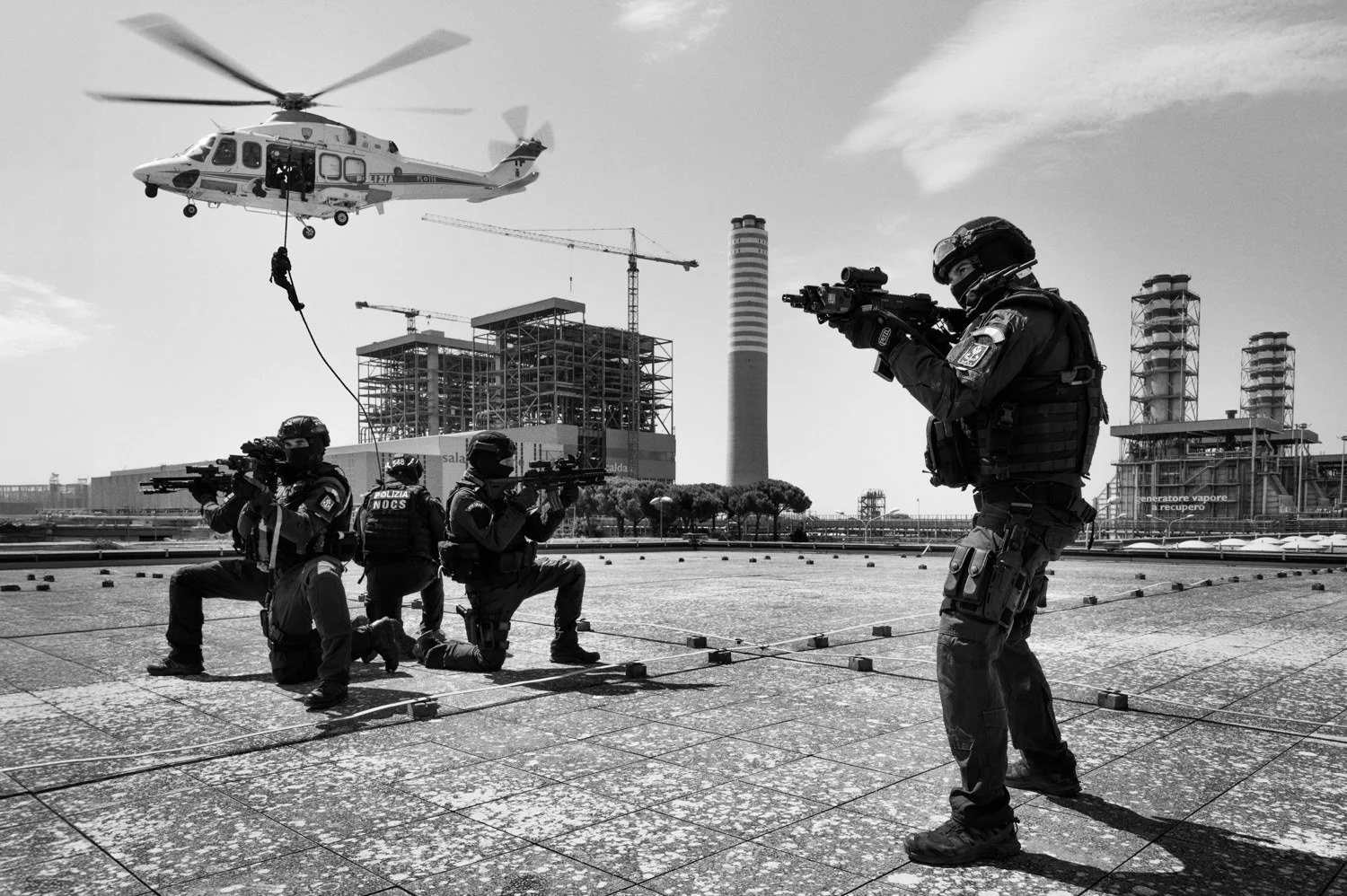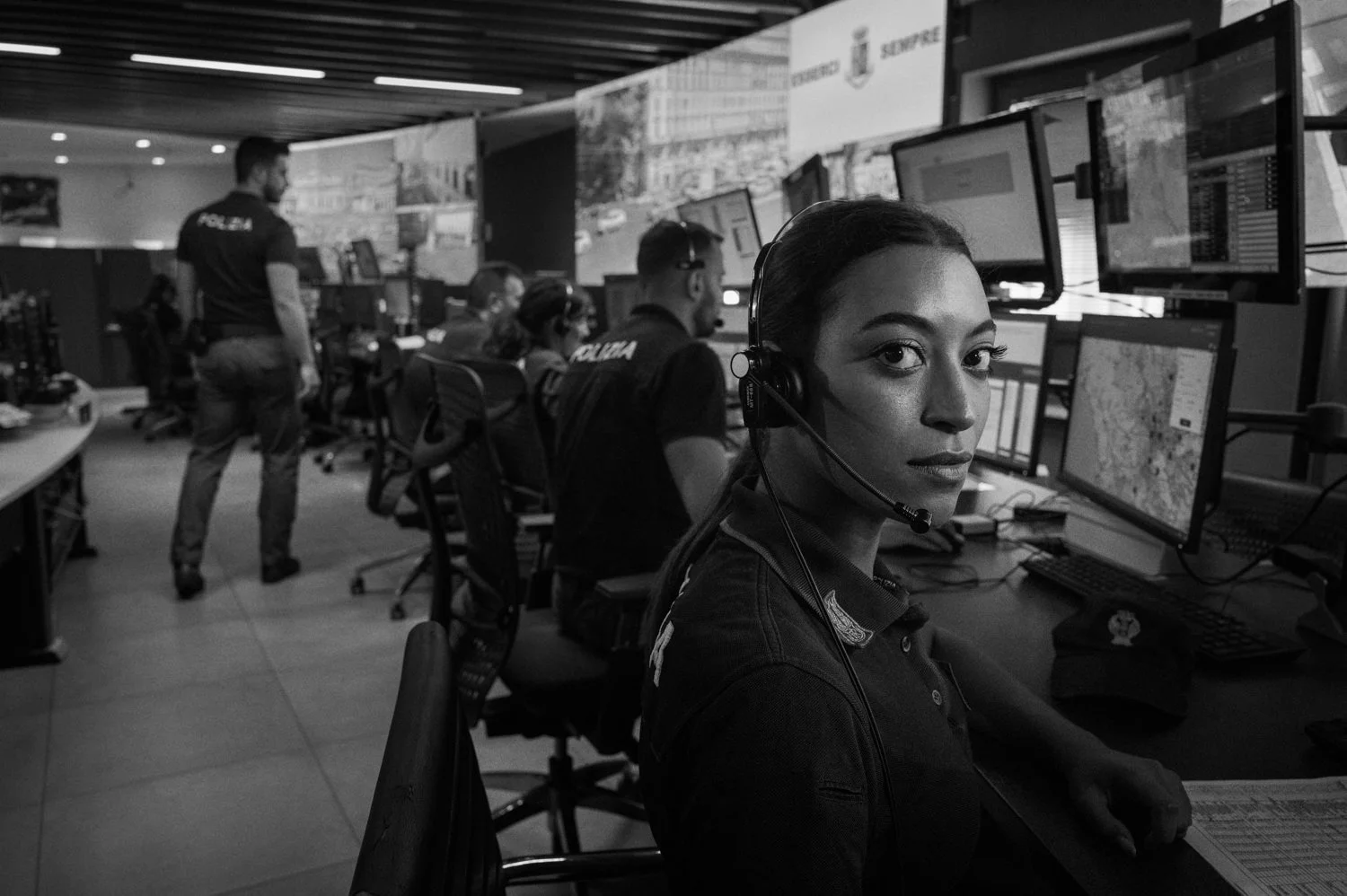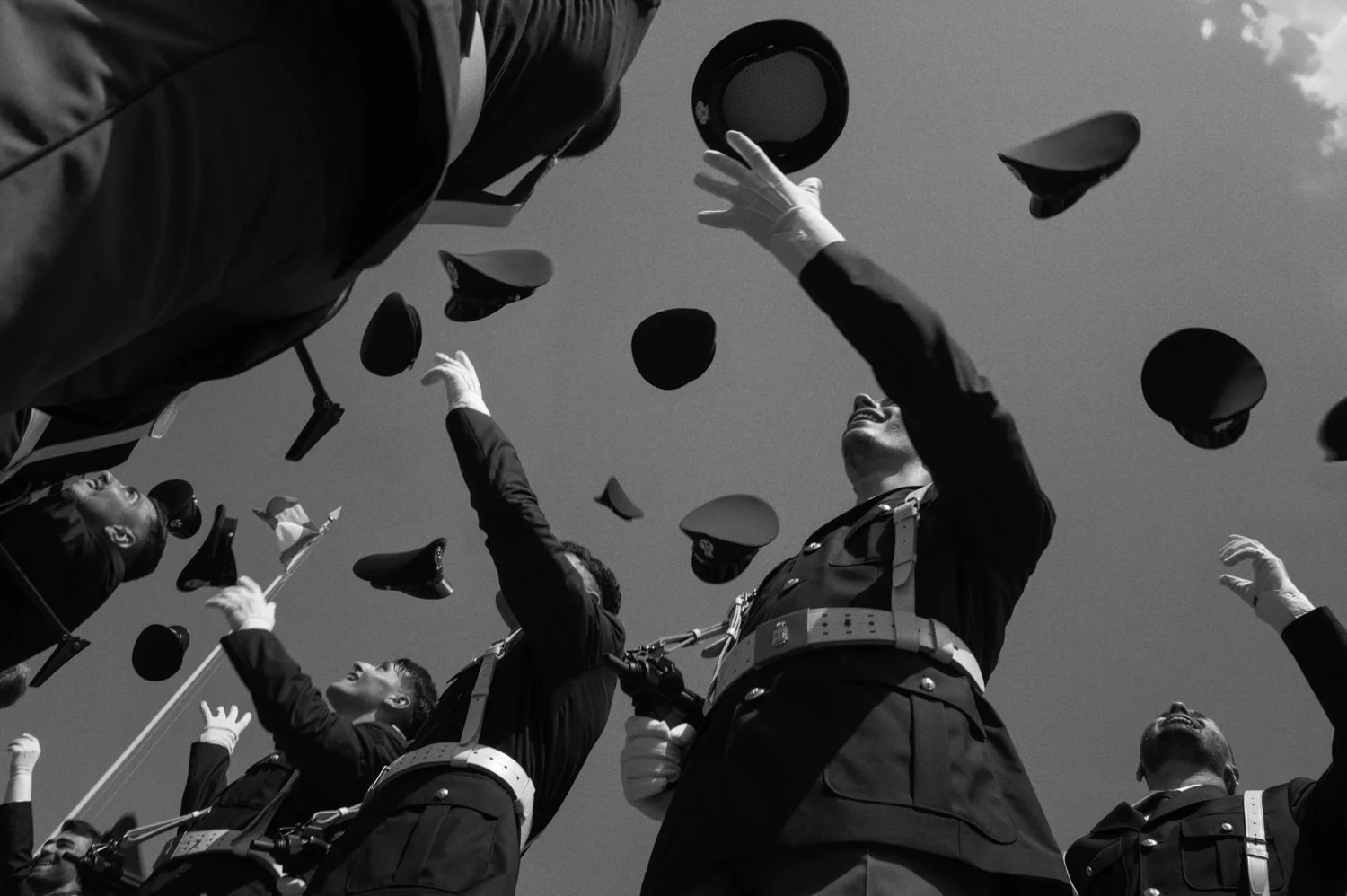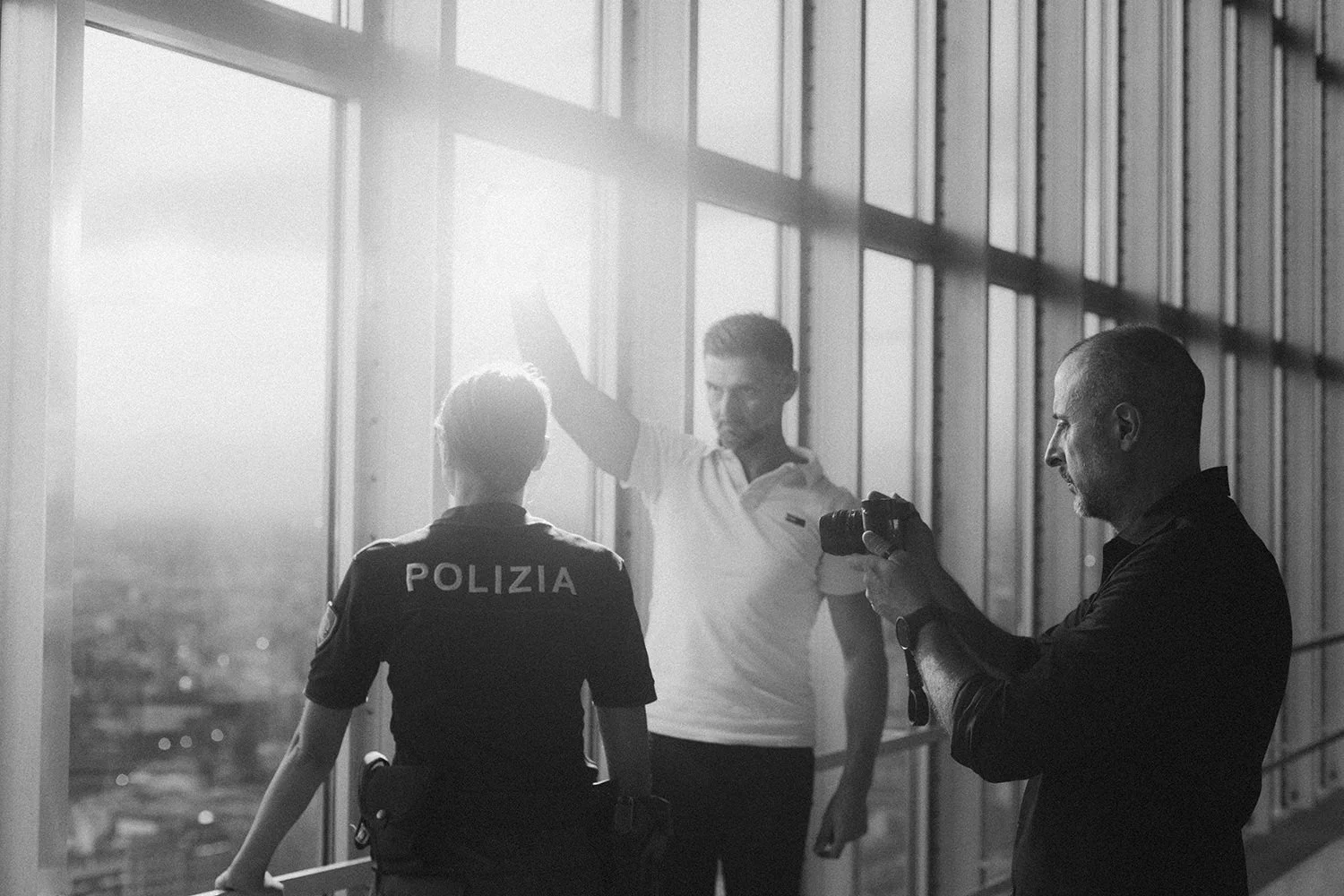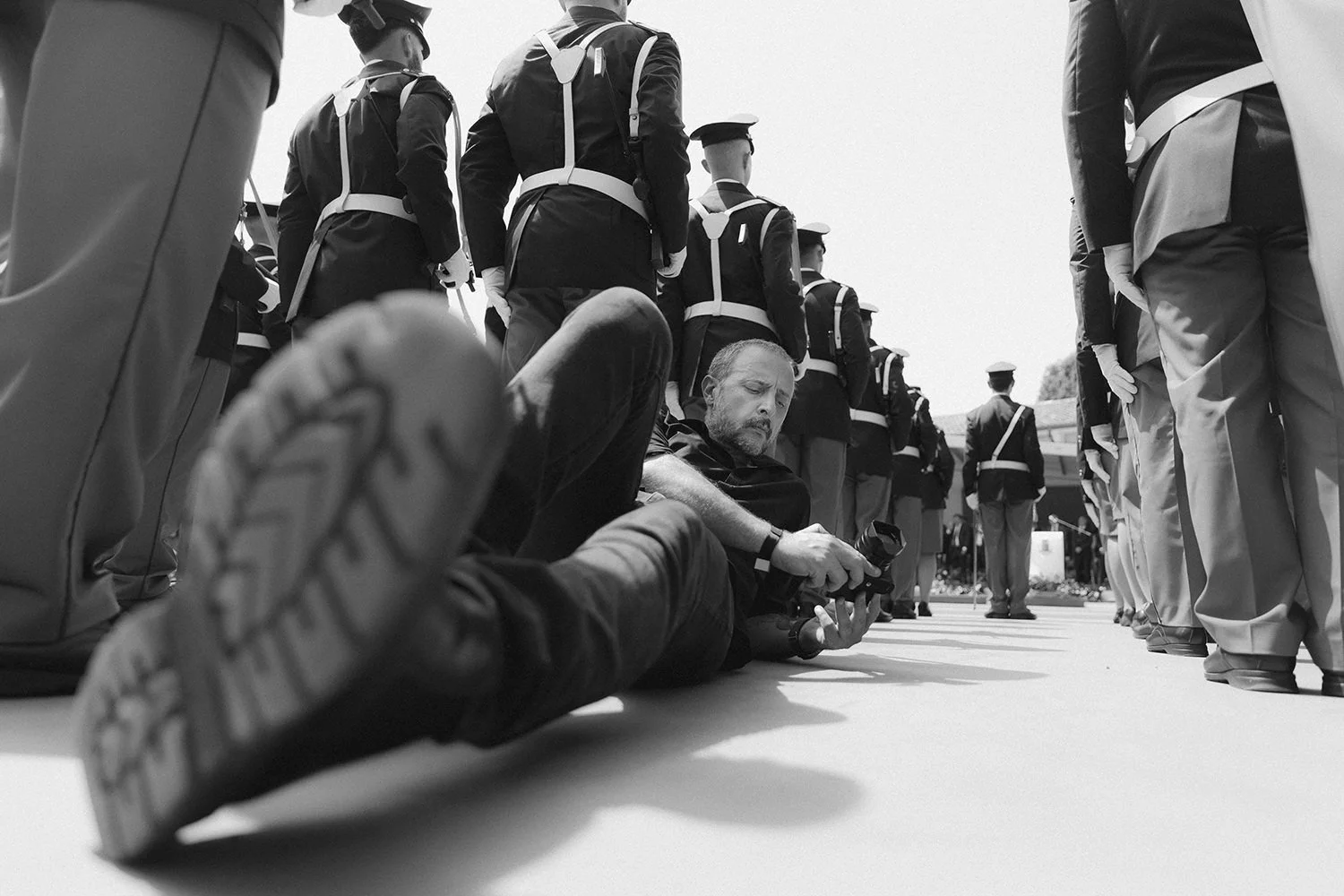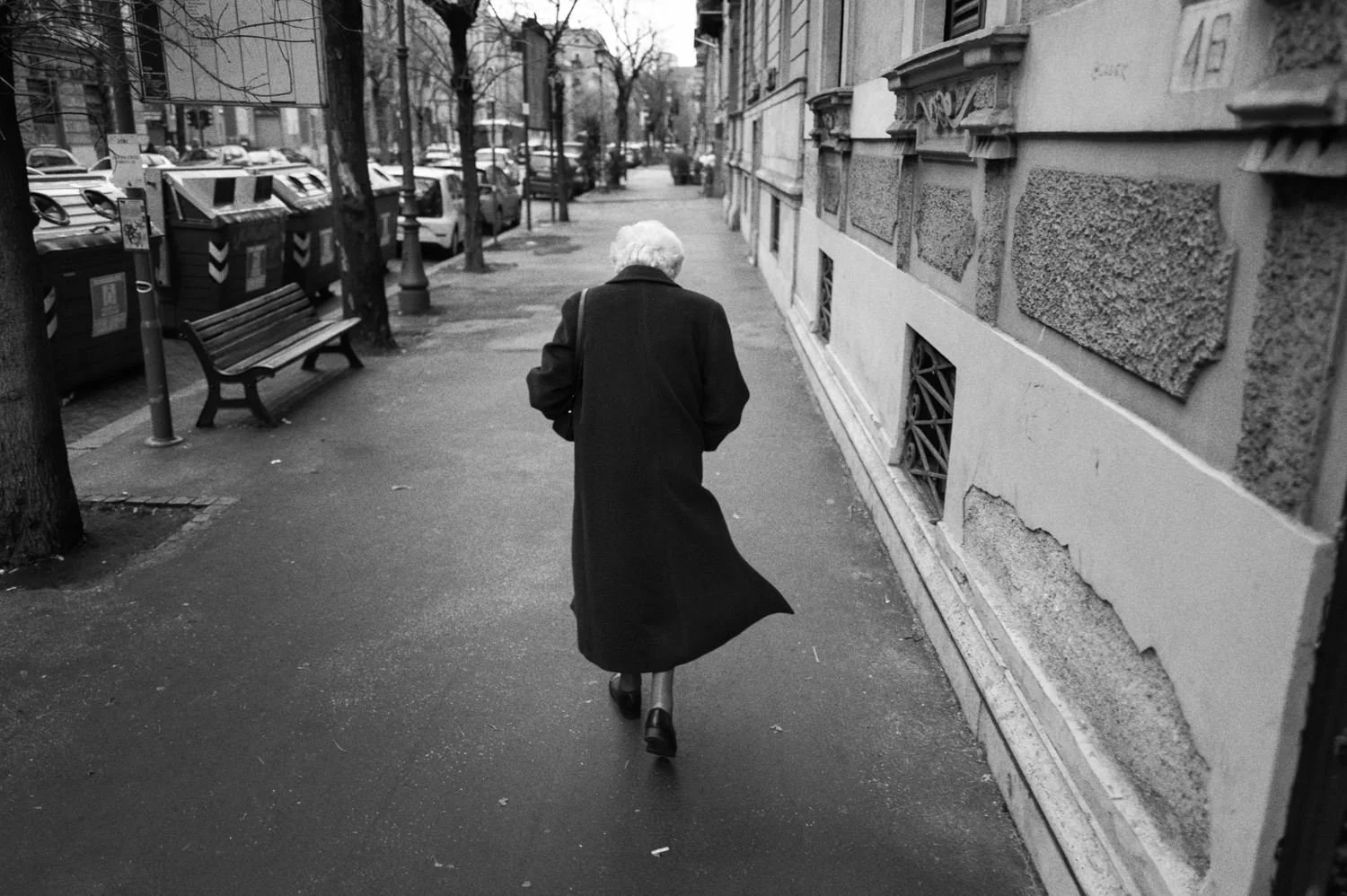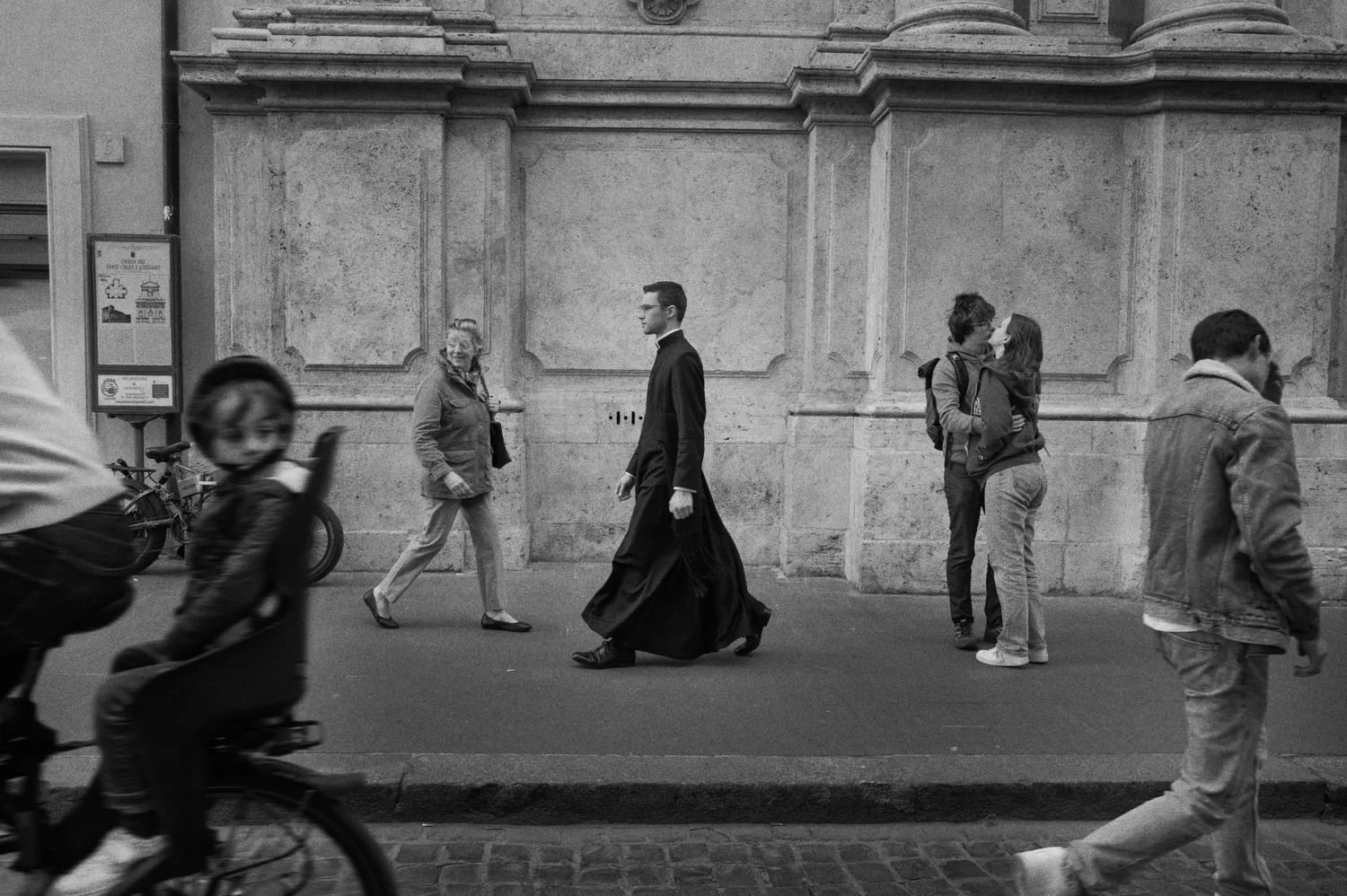The opportunity to document the Italian State Police for their annual calendar was both an honor and a profound learning experience. Working with a Leica Q3 camera, the project focused on capturing authentic moments in the daily lives of these dedicated public servants, using black and white horizontal compositions to highlight the dignity and importance of their work. This artistic choice served to eliminate distractions and draw attention to the essential elements of each scene: the determination in an officer's eyes, the protective stance of a patrol unit, or the gentle interaction between police and citizens.
Natural light and minimal intervention became guiding principles throughout the project, allowing the true nature of police work to shine through. The officers' commitment to their duties took center stage in every frame, from office environments to field operations. Their professionalism and dedication became evident in countless small moments: the careful inspection of equipment before a shift, the focused attention during briefings, and the swift response to citizen needs.
One particularly moving moment occurred at a train station, where a chance encounter with an off-duty police family resulted in an unforgettable photograph. Their young daughter's spontaneous interaction with the camera captured the human side of law enforcement that often goes unseen. This serendipitous meeting highlighted how the commitment to service extends beyond working hours, shaping the lives and families of those who choose this noble profession.
The police academy graduation ceremony provided another powerful reminder of service and sacrifice. As new officers embraced their families and colleagues, their raw emotions told a story of dedication that transcended the photographs themselves. These moments revealed the profound impact of choosing a life in law enforcement – not just on the officers themselves, but on their entire support network of family and friends who share in their commitment to public service.
The project presented various technical challenges, from rapidly changing lighting conditions to diverse operational situations. However, the extraordinary support from all departments, especially the Office of Ceremonial and External Relations of the Public Security Department, made it possible to overcome these obstacles and focus on telling the officers' stories. Their patience and cooperation during the documentation process revealed a deep understanding of the importance of sharing their work with the public they serve.
Throughout the documentation process, the parallels between photography and law enforcement became increasingly apparent. Both professions demand precision, timing, and adaptability, though officers face far greater responsibilities in their mission to protect and serve. Their split-second decisions and unwavering focus mirror the photographic process, but with immeasurably higher stakes and more significant consequences for the communities they protect.
Each image in the calendar strives to convey the authenticity of police work, capturing moments that reveal both the professional dedication and human connection these officers bring to their communities. From the concentration visible during operations to meaningful interactions with citizens, these photographs aim to tell the real story of the State Police. Whether documenting specialized units during training exercises or capturing routine patrol work, each frame seeks to honor the complexity and importance of their mission.
The diversity of police work became evident throughout the project. From cybercrime units working tirelessly in front of computer screens to traffic officers braving all weather conditions, from forensic experts meticulously examining evidence to community officers engaging with local youth – each department demonstrated unique challenges and approaches to maintaining public safety. This variety of assignments and responsibilities highlighted the adaptability and broad expertise required of modern law enforcement.
The calendar represents more than a collection of institutional portraits – it offers a glimpse into the daily lives of those who dedicate themselves to public safety. Through these images, viewers can witness the unwavering commitment of officers who serve their communities with distinction, whether on the streets or in operations centers. The photographs reveal quiet moments of preparation, intense periods of activity, and the constant vigilance that characterizes police work.
This visual narrative, grounded in documentary photography, attempts to reveal the fascinating and complex world of the Italian State Police. Most importantly, it stands as a tribute to the thousands of officers who work tirelessly to protect and serve their communities every day. Their stories, captured in black and white, speak to the enduring values of public service, sacrifice, and dedication to the greater good.
The photographic approach to this calendar prioritized consistency and authenticity throughout every shoot. The Leica Q3's exceptional low-light performance and dynamic range proved invaluable across diverse shooting conditions, from dimly lit office corridors to bright outdoor scenes. The fixed 28mm lens, while initially seeming restrictive, revealed itself to be ideally suited for documenting law enforcement work.
This focal length captured both intimate moments and their crucial context, allowing viewers to feel present in the scene while maintaining a respectful distance that didn't interfere with police operations. For controlled indoor portrait sessions, minimal supplementary lighting was introduced through carefully positioned LED panels, providing subtle fill light that preserved the natural ambiance while ensuring essential detail remained visible in the officers' uniforms and expressions.
This approach maintained visual consistency with the ambient-light photographs that comprise the majority of the calendar, creating a cohesive narrative that flows naturally from page to page. Working within these technical constraints – one camera, one lens, available light with minimal supplementation – helped maintain focus on what truly mattered: the dedication and professionalism of the officers themselves.
The project ultimately serves as a bridge between law enforcement and the communities they protect, offering citizens a deeper understanding of the men and women who dedicate their lives to public safety. Through these images, the calendar aims to strengthen the bonds of trust and respect between police and public, highlighting the shared commitment to a safer, more secure society. Each photograph serves as a testament to the profound responsibility and honor inherent in wearing the uniform of the Italian State Police.
